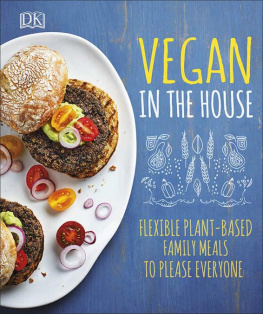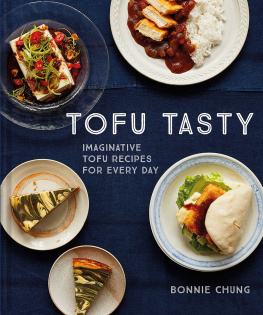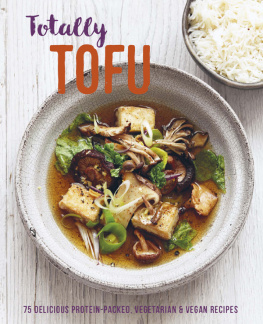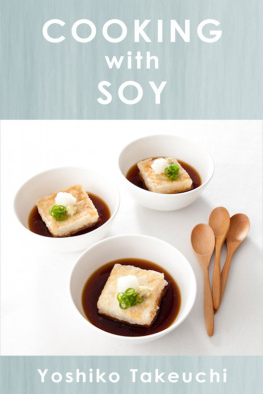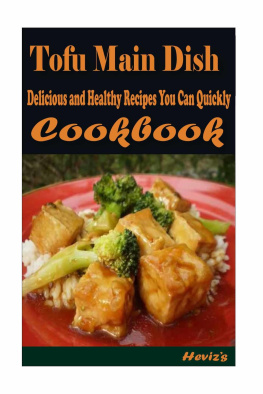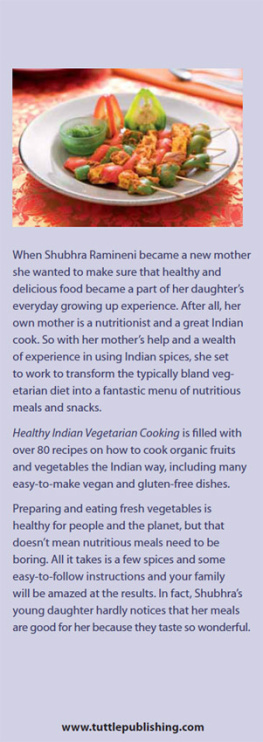Cooking
with
SOY
Copyright 2015 in text: Yoshiko Takeuchi
Copyright 2015 in images: Sherly Susan
All rights reserved. No part of this publication may be reproduced, stored in a retrieval system or transmitted, in any form or by any means, electronic, mechanical, photocopying, recording or otherwise, without the prior written permission of the publishers and copyright holders.
Photographs: Sherly Susan www.sherlysusanphotography.com
Food stylist: Yoshiko Takeuchi www.healthysoycooking.com
Assistant chef: Rie Sakata
Designer, e-book authoring: Yumi Kamei
Thanks to Noritake for crockery and glasses.
Spiral foods for providing quality products for this book.

A Message From Author
My hope is that this book will inspire healthy living.
May this book be helpful and useful to those who would like to increase their plant-based meals for ultimate health, those who have diet restrictions because of allergy or disease and those who gave up or are trying to give up animal products because of their love and care for animals and the earth.
Let's enjoy cooking and eating even more!
Navigation
Why cooking with soy?
I have always believed that what we do in this world should reflect our greatest passions.
I love food and I enjoy anything to do with food; not only eating and cooking it, but also learning about food and its nutritional benefitseven shopping. I also enjoy sharing recipes and passing on my cooking skills. That is why I have been a chef for over a decade and have taught cooking for nearly 20 years, both in Japan and Australia.
I love almost all foods, but I have a special passion for tofu. There might be food out there that is tastier than tofu and some people think tofu is bland and so avoid it. But tofu is a healthy foodit is low in fat and calories, has zero saturated fat, its cholesterol-free, rich in protein and provides bone-healthy minerals, like calcium, potassium and magnesium. The benefits of tofu are many and easy to find.
I have a strong passion for health and place a high value on it. So I love that tofu can be so versatile and yet deliver the benefits I need for a healthy life. You can eat it plain, deep-fried, stir- fried, steamed, grilled or stewed. You can use it to make sauces, dressings and desserts. You can change the shape of itslice it, dice it, grate it, puree it, crumb itthere are so many choices.
Tofu and other soy products have been widely used in Asian cuisine for more than a thousand years and yet they can be used in any type of cuisineEuropean, Middle Eastern and South Americanas you will discover in this book.
In 2007, I started Healthy Soy Cooking to help inspire healthy living and to teach innovative ways to cook with tofu and other soy products such as edamame, miso, soy sauce, soymilk and more.
Since then I have been creating various soy dishes; and not just for Japanese styles, but also for other cuisines I learnt through my commercial cooking days, working in various restaurants. This is the book where I can finally share with you the recipes that I have been teaching and creating for almost 20 years.
So heres hoping I can inspire you to eat and live healthily, and open up your world to the magic of these healthy and tasty soy dishes!
The story of soy
Go natural
Soybeans are a kind of bean that is used in many various kinds of foods, ranging from soy milk, soy sauce, miso, and tofu. Soybeans are also commonly included in vegetarian and vegan diets due to their nutrient rich nature, and also because of their versatile texture. Soy has been included in Asian cuisine for many hundreds of years, and has more recently entered Western cuisine.
The health benefits of soy
Soy is commonly known as a healthy food. As it can be used as a meat substitute, it is highly nutritious with many health benefits, such as:
- High in fibre
- High in protein
- Free of cholesterol and lactose
- Low in saturated fat
- Prevents bone loss
- Source of omega-3
- Good source of isoflavones
- Contains high amount of phytoestrogens, which can help with menopausal symptoms
- Source of antioxidants
- Good source of estrogen, which strengthens bones and also lowers cholesterol
The history of soy
Soybeans first originated in China, and were later cultivated in Japan and other Asian countries. Soybeans were first grown in Asia for their seeds, which were used for fermented, dried and fresh foods in Asian diets. Soy features as a primary product in many Asian cuisines, and especially in Japan. Japanese cuisine features soybeans in many forms, incorporating them into their cuisine on a daily basis.
In the early 20th century, soybeans began to be cultivated in America and were initially used as a manure. It was only after the 1940's that soybeans began to be grown as a food product in America.Today, the US is the largest manufacturer of soybeans in the world, along with Brazil, Argentina, India and China also producing large amounts. Soybeans and soy by-products are now readily available in many supermarkets in Western nations. Despite this, the majority of the soybeans produced in the US are GMO. There is a lot of controversy around GMO food, and particularly GMO soybeans. Conflicting arguments about the nature of soy will be explored in the text below.
Japan: The soy country
In Japan, soy is eaten every day in many different ways. Soy sauce is the most common seasoning used in Japan. Soy is consumed in many common food dishes in Japan, such as miso (fermented soybean paste) soup, which is one of the most common national dishes in Japan and is consumed on a daily basis, and very commonly, even more than once a day. In addition to tofu, there are also many other kinds of tofu by-products eaten in Japan, which include aburaage, natto, okara, edamame, atsuage and kinako, which are just a few of them. A fermented soy product like natto is eaten as part of a traditional Japanese breakfast or lunch every day.
In places in Japan such as izakayas, there are always many different kinds of tofu dishes on the menu. The three most commonly consumed soy products in Japan are tofu, miso and soy sauce. These three products are consumed on a daily basis for most Japanese people. Although these soy products are so commonly consumed in Japan, Japan is not a big consumer of soy milk, which differs highly from Western nations who consume lots of soy milk.
In contrast with Western nations, Japan eats most of its soy products in a whole form. In Japan there are also shops that specialise in selling tofu and tofu products, so people have the option of buying freshly made tofu every day. Japan has one similarity with Western nations in that Japanese people consume many soy products on a daily basis. As soy is used in many processed foods, many people in Western nations are consuming soy products unknowingly every day. Soy is one of the essential staples of the Japanese diet, but Japanese people consume soy in different ways than Western nations, which may account for the health differences between the two.


